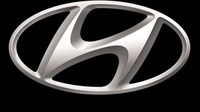Hyundai Motor Announces 2013 Q1 Business Results
SEOUL, SOUTH KOREA – April 26, 23: Hyundai Motor Company has announced 2013 first-quarter earnings results. Despite various internal and external factors, continued positive sales growth overseas has been the impetus for a +6.0 percent increase in sales revenue, compared to the same period last year.
For the first three months of 2013, sales revenue rose +6.0 percent to AUD$18.68 billion (KRW 21.37 trillion) automotive AUD$15.44 billion / finance and others AUD$3.24 billion
(auto KRW 17.66 trillion / finance and others: 3.70 trillion) from a year earlier, thanks to strong sales outside Korea and the addition of a subsidiary, Hyundai KEFICO. Operating profit and net profit fell -10.7 percent and -14.9 percent to AUD$1.63 billion and AUD$2.51 billion (KRW 1.87 trillion and 2.88 trillion), including non-controlling interest. The loss can be attributed to increased costs driven by a weaker currency and increased one-time provisions.
Hyundai sold 1,171,804 units globally (Korea: 153,728 / overseas: 1,018,076) during the first quarter of 2013, a +9.2 percent increase year-on-year. While its sales in Korea fell -0.7 percent from the same period a year ago, overseas sales rose +10.9 percent to 1,018,076 units, offsetting the decline in the domestic market.
Hyundai’s production volume at its Korean plants declined during the first quarter due to limited production stoppages on weekends, currently under resolution process, which lead to increased fixed costs. A more stable outlook on currency exchange rates and Hyundai’s ongoing robust sales in overseas markets such as China and Brazil has the company’s earnings forecast to improve going forward.
Hyundai forecasts major automotive markets, including selected emerging markets, will continue to post slower growth amid fiercer competition and an uncertain business environment. Hyundai aims to strengthen its fundamentals through qualitative growth and quality management bolstered by the launch of local strategic models, the fortification of sales and service networks, and an aggressive strategic marketing schedule.
Such efforts have already been in progress, posting significant results. The HB20, which rolled off Hyundai’s new Brazilian plant in October 2012, has won five major local awards including the 2013 Brazilian Car of the Year. By strengthening its dealer network, Hyundai’s market shares in European and Indian markets are enjoying positive growth. In the U.S., cumulative sales of the Elantra has exceeded 2 million units since it launched in 1991, due to differentiated marketing strategies based on enhanced product quality. These successful considered tactics will be applied globally moving forward.
Cautionary Statement with Respect to Forward-Looking
Statements
In this release and in related comments by Hyundai
Motor’s management, our use of the word “expect,”
“anticipate,” “project,” “estimate,”
“forecast,” “objective,” “plan,”
“goal,” “outlook,” “target,”
“pursue” and similar expressions is intended to identify
forward looking statements.
The financial data discussed herein are presented on a preliminary basis before the audit from Independent Auditor; final data will be included in HMC’s Independent auditors report. While these statements represent our current judgment on what the future may hold, and we believe these judgments are reasonable, actual results may differ materially due to numerous important factors. Such factors include, among others, the following : change in economic conditions, currency exchange rates or political stability; shortages of fuel, labour strikes or work stoppages; market acceptance of the corporation’s new products; significant changes in the competitive environment; changes in laws, regulations and tax rates; and the ability of the corporation to achieve reductions in cost and employment levels to realize production efficiencies and implement capital expenditures at levels and time planned by management.
We do not intend or assume any obligation to update any forward-looking statement, which speaks only as of the date on which it is made.



